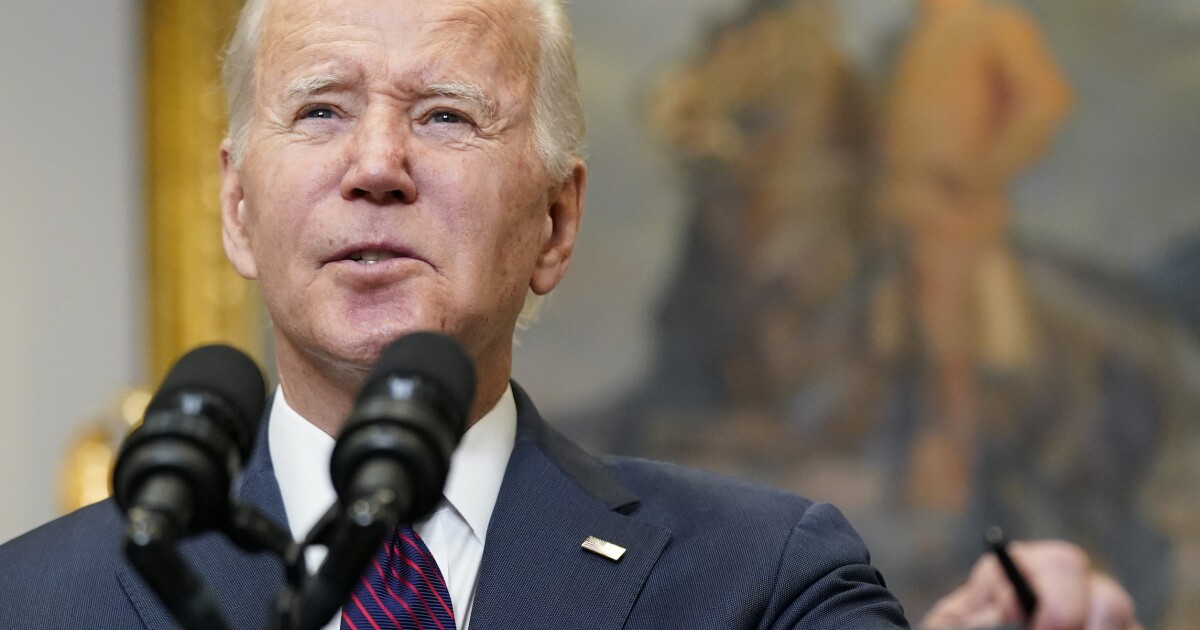

President Joe Biden spoke of November’s 7.1% inflation rate as a positive thing on Tuesday morning, calling the news “a little bit of breathing room for the holiday season.”
But that figure, which has declined from 9.1% in June, remains many multiples above the Federal Reserve’s 2% target inflation rate and threatens to continue dogging Biden throughout the remainder of his first term in office.
INFLATION DROPS TO 7.1% IN LATEST SIGN OF RECOVERY — BUT ‘STILL TOO HIGH’
“It’s going to take time to get inflation back to normal levels as we make the transition to more stable and steady growth,” Biden said from the White House soon after the latest inflation rate was announced. “I know it has been a rough few years for hardworking Americans and small businesses as well, but there are bright spots all across America.”
The president’s comments highlighted the positives of inflation inching down while acknowledging how high it reached and remains today. But the Biden administration has been dealing with higher-than-expected inflation for more than a year, initially promising it would be transitory and then slowly acknowledging there would not be a quick fix.
Core inflation, which strips out volatile food and energy prices, eased to 6% in November. But some of the items people buy most often have risen far more. Chicken prices are up 12% year over year, dairy products are up more than 16%, energy 13%, and eggs 43%.
Inflation was stable for most of the Obama and Trump presidencies and stood at just 1.4% the month Biden took office. From there, it rose quickly, surpassing 5% by May, 7% last December, and 8% this March before peaking at 9.1% in June.
Republicans have attacked big government spending, particularly the $1.9 trillion American Rescue Plan that passed with no GOP support, as the reason for “Bidenflation.” Democrats and left-leaning economists have instead tended to focus on lingering supply chain problems from the pandemic.
There is truth to each of those, said Bipartisan Policy Center Senior Vice President Bill Hoagland.
“It’s hard to separate the two, but both have contributed,” he said. “No question the very large amount of stimulus put into the economy along with supply chain problems helped increase demand. Simple economics says those factors were driving up prices.”
But even with supply chain crunches easing and new stimulus packages unlikely, Hoagland argued it’s difficult to predict when or if inflation will get closer to its 2% target. The Fed is aggressively raising interest rates and could issue another 50-basis-point hike on Wednesday in hopes of taming inflation.
Conservatives decried the latest figures as indicative of Biden’s failure.
“The holidays are always an expensive time of year, and ongoing historic inflation caused by reckless Democrat spending is making the season costlier than ever,” said Alfredo Ortiz, president of the Job Creators Network. “Biden has been gaslighting Americans on inflation since it started, but the truth is simple: Unless government spending gets under control, inflation won’t decrease fast enough to provide relief to ordinary Americans and small businesses.”
Biden’s job approval when it comes to the economy stands at just 38%, which is lower than his still-low overall approval rating of 41.4%.
The president will hope to get inflation numbers down fast beginning next year in order to avoid having a Jimmy Carter-like presidency dominated by the issue, especially if he seeks reelection in 2024.
The Congressional Budget Office’s economic estimates for the next two years were recently revised downward, with the office now saying it’s as likely as not that the economy will shrink in 2023. The CBO also projected that inflation could range between a healthy 1.8% and a still-alarming 4.6% by this time next year.
CLICK HERE TO READ MORE FROM THE WASHINGTON EXAMINER
Before leaving his Tuesday morning comments, Biden was asked when inflation would return to normal levels. He responded that he hopes to be “much closer” by the end of 2023.
“But I can’t make that prediction,” the president said. “I’m convinced [prices are] not going to go up. I’m convinced they’re going to continue to go down.”





